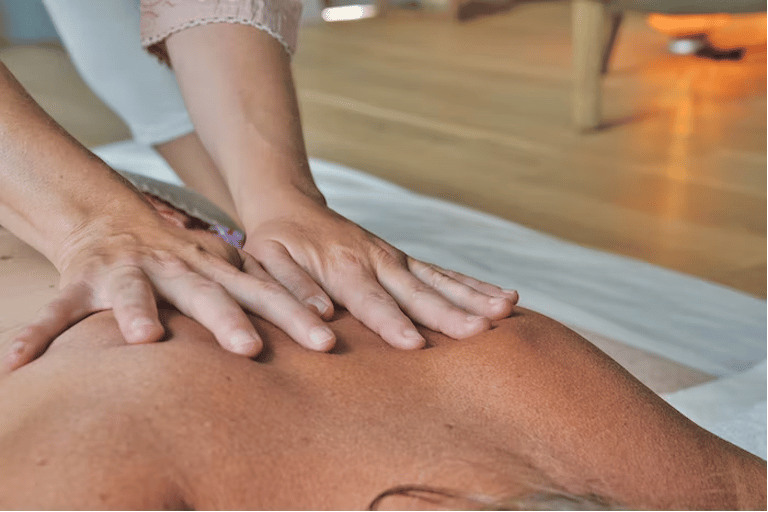If you’ve never experienced the benefits of massage therapy, you may be wondering what all the fuss is about—and you’re definitely missing out! While many people regard going for a massage as a simple pleasure to spoil yourself with, you’ll be surprised to learn that regular massages actually have many health advantages.
People who regularly suffer from shoulder pain or a tight neck have learnt that local experts such as a Noosa physiotherapy team are skilled enough to have you feeling better after just a treatment or two.
Aside from easing stiff and aching muscles, a regular massage or physiotherapy session also has several other benefits.
The Top Ailments Massaging and Physiotherapy Can Provide Relief For
A little-known fact is that back pain is the top reason for lost work productivity and early retirement in Australia every year. Additionally, back-related issues cost the Australian health system $4.8 billion annually.
That said, it’s no wonder many healthcare practitioners recommend that patients with back ailments consider regular massage therapy sessions. Are there other benefits to treating yourself to regular massages?
1. Tension Headache Relief
It’s good to know that massage therapy doesn’t only benefit your back and neck muscles. Concentration or tension headaches can create a pain that feels as though your head is being constricted, creating immense discomfort.
Regular massage therapy relieves the muscle tension that builds up in your head, neck and shoulders. Patients who suffer from chronic headaches have reported that their headache symptoms are reduced even after the first massage session.
2. Reduce Stress-Related Insomnia
It’s not unusual to experience a sleepless night now and then. However, if you’re regularly struggling to sleep, it can take its toll on your health.
In many instances, bouts of insomnia can be attributed to stress. Massage therapy relieves and reduces the tension that’s building up in your muscles. Furthermore, massaging also reduces high levels of the stress hormone cortisol while encouraging relaxation which will help you sleep better.
3. Aids With Myofascial Pain Syndrome Management
Anyone suffering from Myofascial pain syndrome knows how unpleasant it can be. Simply put, it’s a chronic pain where muscle pressure can cause pain in places that seem related to the specific muscle.
Unfortunately, there’s no cure for Myofascial pain syndrome. However, patients have reported pain relief from regular massage sessions. Opting for a full body massage is an excellent way to ensure that all the muscles are treated.
4. Assists with Soft Tissue Strains or Injuries
If you’ve ever sprained your ankle or wrist, then you’ll know that a gentle massage often alleviates the pain. This is because the right type of massage will boost blood flow to the area which ultimately encourages recovery. Almost any sports injury recovery also involves a few massage sessions to speed up healing processes.
5. Increase Circulation During Pregnancy
Pregnancy, for all its happy moments, can also have several downsides, such as feeling uncomfortable. Tension in the legs and ankles caused by poor blood flow can be unpleasant but getting a massage can improve blood circulation as well as reduce tension in your muscles.
You do need the right type of massaging, since not all types are safe while you’re pregnant. Always mention to a therapist if you’re pregnant and enquire about the best treatments that will be beneficial in your condition.
6. Temporary Arthritis and Joint Pain Relief
People who suffer from arthritis experience swelling and pain in their joints. During a massage or physiotherapy session, the surrounding muscles are kneaded and rubbed, causing more blood to flow to the painful joints. This can provide temporary relief for a condition that can be excruciating, if untreated.
7. Reduce Inflammation After Injury
Many healthcare practitioners will recommend physiotherapy or a few simple massage sessions as part of a patient’s recovery process. This is because this therapy can reduce inflammation and promote healing in the injured area. Regular massage during recovery also reduces scarring.
Different Massages to Consider
One of the reasons massage therapy is so effective is that there are different types, so treatment can be tailored to a patient’s need. Some of the more popular options are listed below:
- Deep massage: This type of massage involves a little pressure combined with slower strokes. The point here is to reach the deeper muscle tissue layers. Ideally, this is the type of massage you’ll get for an injury such as a sprain.
- Swedish massage: For a more gentle and relaxing massage, the Swedish massage is the one you should opt for. It involves long strokes, kneading and deeper circular movements. Vibration and tapping are also used to ease muscle pain.
- Trigger point massage: Your therapist will focus on areas where you’re experiencing tension or tightness, possibly because of overuse. Treating these areas alleviates muscle pressure and increases blood flow.
- Sports massage: Athletes who have suffered an injury receive a specialised sports massage that reduces tension, releases lactic acid and encourages faster recovery.
Final Thought
Clearing space on your schedule to include a visit to your local massage therapist or physiotherapist seems like a very good way to spoil yourself this year. Whether you have a medical condition, or simply just want to relax, you can see it’s wise to add it to your calendar!

